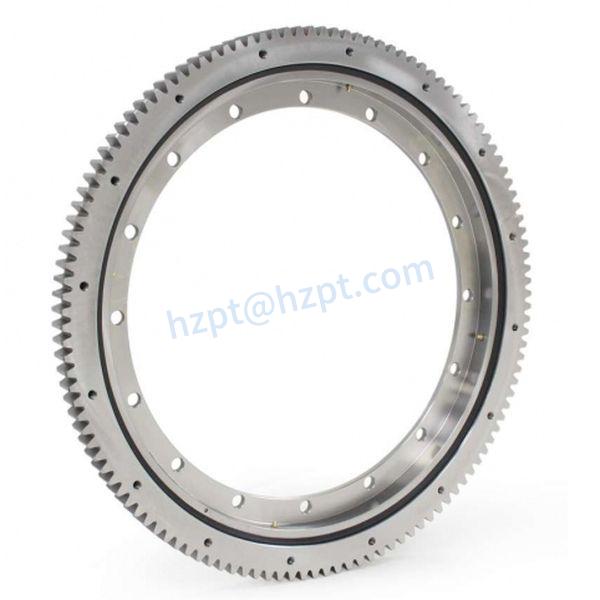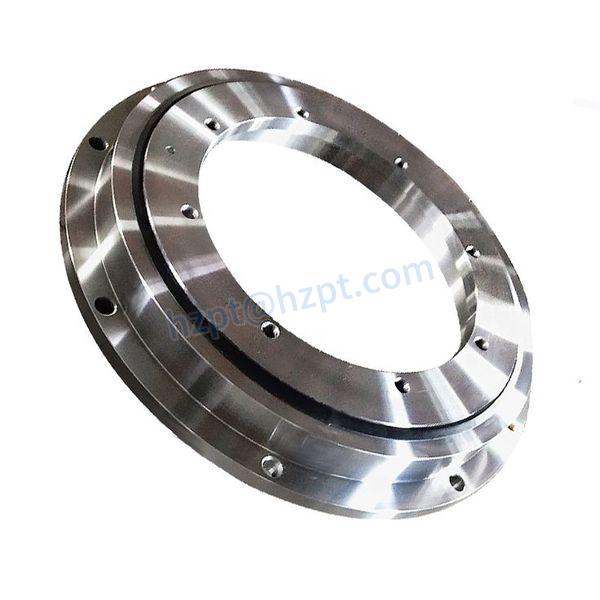Product Description
Product Description
Item No.: 3040H7-V-2RS
Type: Deep Groove Ball Bearing(max. completed ball bearings)
Material: Stainless Steel(AISI440C/9Cr18)
Bore diameter: 30mm Outer diameter : 40mm Width(Height/Thickness): 7mm
Size: 30*40*7mm
Closures: 2 Rubber seals(NBR)
Balls: Stainless Steel Balls
Lubrication: Lubricated with Mobil XHP-222 grease.
| Item No. | Bore diameter (mm) |
Outer diameter (mm) |
Width(Height/Thickness) (mm) |
Closures |
| 3040H7-V-2RS | 30 | 40 | 7 | 2 Rubber seals(NBR) |
Detailed Photos
3040H7-V-2RS
Our Advantages
Compared with ordinary bearings, the stainless steel balls inside the full ball bearing connect the components to each other and also allow them to rotate freely between each other.Therefore, the bearing’s load capacity has been enhanced to meet the usage needs of large mechanical equipment. Make the overall bearing stable and improve the working efficiency of mechanical equipment. And it enhances wear resistance and can withstand high-strength wear and impact.
max. completed ball bearings:
Advantage:
1.Maintain a fixed distance between the arrangement of rolling elements in the bearing raceway.
2.Prevent running beads.
3.Avoid grinding between rolling elements.
4.Distribute the rolling element evenly along the circumference.
5.Reduce the adverse effects of bearing clearance movement during operation.
6.Strong load capacity, CZPT to adapt to the usage needs of large mechanical equipment.
7.Stable load-bearing, improving the efficiency of mechanical equipment.
8.Strong wear resistance, CZPT to withstand high-strength abrasion and impact.
Disadvantages:
1. High price: The production of full ball bearings requires a large amount of advanced materials and processing technology, so their prices are relatively high, and compared to other bearing types, their costs are higher.
2. Difficulty in installation and maintenance: Due to the fact that full ball bearings are a complex type of bearing, their installation and maintenance require highly skilled professionals, making them difficult to maintain and maintain.
Our company provides high-precision homemade bearing of ordinary material, including deep groove ball bearing and full complement cylindrical roller bearings.
The material refers to high-quality bearing steel, thermal treatment technology is put under strict control, and it is CZPT to carry out cryogenic treatment. And full complement cylindrical roller bearings adopts advanced roller CZPT for thermal treatment. Other technologies are all processed by full-automatic and semiautomatic equipment, and the production technology and quality control are arranged as per P5 precision. It products widely support home and abroad manufacturers of electric tools, mechanical equipment, automobile components, etc.
Manufacture Equipment
Company Profile
HangZhou WOLEE INDUSTRIAL CO.,LTD
HangZhou WOLEE induststial Co., Ltd. was founded in 2015. It is a professional company which engages in import and export of industrial components and is a professional production base with joint stocks.
The company mainly operates bearings and other industrial components such as chain, CZPT rail, gear and micro gearbox. Its products are widely used in the fields of metallurgy, mining, papermaking, petrochemical, power, railway, aviation, cement, textile, machinery, etc., it has lots of clients among these fields and has accumulated rich experience to meet different demands of all sectors. At present, its trade scale expands increasingly, its clients are all across the world, and it wins the trust of home and abroad clients by virtue of good reputation.
The company adheres to the tenet of “people first, quality first, credit first and reputation first” and provides each client with top service.
It heartily hopes to join hands with you to create a wonderful world.
/* January 22, 2571 19:08:37 */!function(){function s(e,r){var a,o={};try{e&&e.split(“,”).forEach(function(e,t){e&&(a=e.match(/(.*?):(.*)$/))&&1
| Aligning: | Non-Aligning Bearing |
|---|---|
| Separated: | Unseparated |
| Rows Number: | Single |
| Samples: |
US$ 10/Piece
1 Piece(Min.Order) | Order Sample |
|---|
.shipping-cost-tm .tm-status-off{background: none;padding:0;color: #1470cc}
|
Shipping Cost:
Estimated freight per unit. |
about shipping cost and estimated delivery time. |
|---|
| Payment Method: |
|
|---|---|
|
Initial Payment Full Payment |
| Currency: | US$ |
|---|
| Return&refunds: | You can apply for a refund up to 30 days after receipt of the products. |
|---|

Can you Explain the Concept of Axial and Radial Load Capacity in Slewing Bearings?
The axial and radial load capacities are fundamental parameters that define the ability of slewing bearings to withstand different types of loads along different directions. Here’s an explanation of these concepts:
- Axial Load Capacity:
The axial load capacity of a slewing bearing refers to its ability to withstand loads that act parallel to the axis of rotation. In other words, it’s the maximum force that can be applied along the vertical or horizontal axis without causing significant deformation or failure of the bearing components.
For example, in applications where the bearing supports vertical loads like those encountered in cranes or excavators, the axial load capacity is crucial to ensure the stability and safety of the equipment. Slewing bearings designed for high axial load capacities have sturdy components and optimized raceway profiles to distribute the load evenly and prevent stress concentrations.
- Radial Load Capacity:
The radial load capacity of a slewing bearing pertains to its ability to withstand loads that act perpendicular to the axis of rotation. These loads are directed toward or away from the center of the bearing. Radial loads can result from weight, force, or moments acting perpendicular to the axis of rotation.
For instance, in applications involving cantilevered structures, the radial load capacity is essential to support the bending moments and forces applied to the bearing. Slewing bearings with high radial load capacities are designed to handle these loads without excessive deformation, minimizing wear and maintaining operational integrity.
- Combined Load Situations:
Real-world applications often involve combinations of axial and radial loads. Slewing bearings must be selected and designed to handle these combined loads effectively. Engineers consider both axial and radial load capacities to ensure that the bearing can safely operate under the expected loading conditions.
Manufacturers provide load rating charts and data that specify the maximum axial and radial loads a slewing bearing can handle. Engineers use this information to make informed decisions about bearing selection for various applications.
In summary, the axial and radial load capacities of slewing bearings are essential parameters that determine their ability to withstand specific types of loads in various directions. Proper consideration of these capacities ensures safe and reliable operation in diverse applications.

How does Proper Lubrication Impact the Performance and Longevity of Slewing Bearings?
Proper lubrication plays a crucial role in enhancing the performance and extending the longevity of slewing bearings. Here’s how it impacts these aspects:
- Reduced Friction and Wear:
Lubrication forms a protective layer between the rolling elements and raceways, reducing friction and wear. This minimizes surface contact and prevents metal-to-metal contact, leading to less wear and extended bearing life.
- Heat Dissipation:
Lubrication helps dissipate heat generated during operation. Adequate heat management prevents overheating, which can otherwise lead to premature bearing failure and reduced efficiency.
- Corrosion Protection:
Lubricants with anti-corrosion properties form a barrier that protects bearing surfaces from moisture and environmental contaminants. This is crucial in preventing rust and corrosion, especially in challenging operating environments.
- Sealing Effect:
Lubrication can enhance the sealing effect of bearing seals, preventing the ingress of dust, dirt, and other particles. This maintains the integrity of the bearing’s internal components and reduces the risk of contamination-related failures.
- Noise and Vibration Reduction:
Properly lubricated bearings generate less friction and operate more smoothly, resulting in reduced noise and vibration levels. This is particularly important in applications where noise reduction is essential.
- Improved Efficiency:
Effective lubrication minimizes energy losses due to friction, leading to improved overall efficiency of machinery. This is significant in applications that require high performance and energy savings.
- Prevention of Micro-Movements:
Lubrication helps prevent micro-movements between the rolling elements and raceways, reducing wear caused by repeated impacts and vibrations during operation.
- Maintenance Reduction:
Proper lubrication reduces the need for frequent maintenance and replacement of bearings. This not only saves time and resources but also contributes to increased uptime and reduced operational disruptions.
- Longevity:
By reducing wear, preventing corrosion, and managing heat, proper lubrication significantly extends the lifespan of slewing bearings. This, in turn, contributes to improved equipment reliability and reduced lifecycle costs.
In conclusion, proper lubrication is essential for optimizing the performance, efficiency, and durability of slewing bearings. Regular maintenance and adherence to manufacturer-recommended lubrication intervals ensure that the bearings operate smoothly and consistently over their operational life.

What is a Slewing Bearing and How Does It Work?
A slewing bearing, also known as a turntable bearing, is a specialized type of rolling-element bearing designed to handle axial, radial, and moment loads simultaneously. It allows rotational movement between two parts while supporting the loads applied to them. Slewing bearings are commonly used in various applications such as cranes, construction equipment, wind turbines, and industrial machinery.
At its core, a slewing bearing consists of multiple components, including an outer ring, an inner ring, rolling elements (balls or rollers), and in some designs, a gear or teeth arrangement. The outer ring is typically stationary and mounted to a fixed structure, while the inner ring is connected to the rotating part. The rolling elements provide smooth movement between the two rings, enabling rotation.
Slewing bearings work by minimizing friction and distributing loads effectively across the rolling elements. When a rotational force is applied to the inner ring, the rolling elements facilitate the smooth rotation of the inner ring relative to the outer ring. The rolling elements are positioned within raceways or grooves in the rings, ensuring proper contact and load distribution.
The addition of gears or teeth to the slewing bearing design enables the transmission of torque between the inner and outer rings. This feature is particularly useful when precise rotation control is required, as seen in applications like cranes and heavy machinery.
In summary, a slewing bearing functions as a rotational joint that can support various loads and movements. Its design, which includes rolling elements and optional gear systems, allows it to manage axial, radial, and moment loads while facilitating smooth rotation between connected parts.


editor by CX 2024-03-09
by
Tags:
Leave a Reply